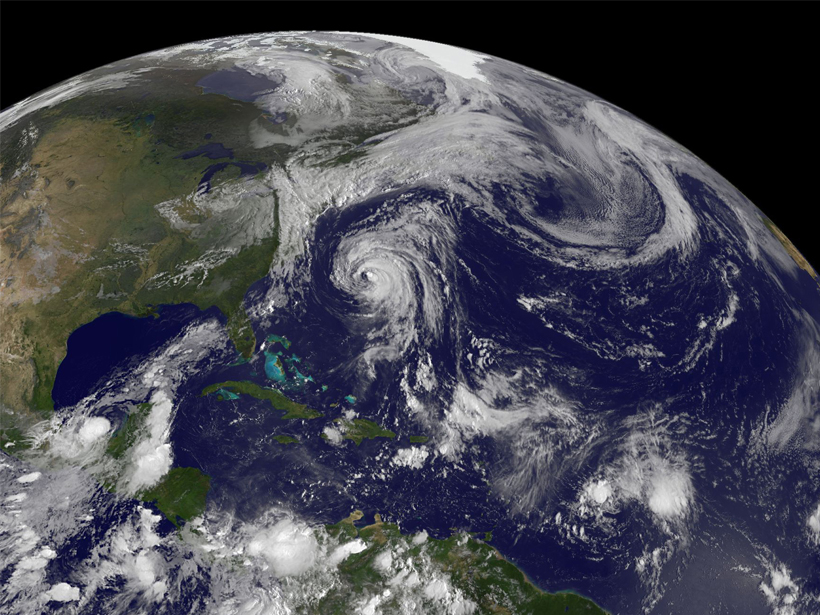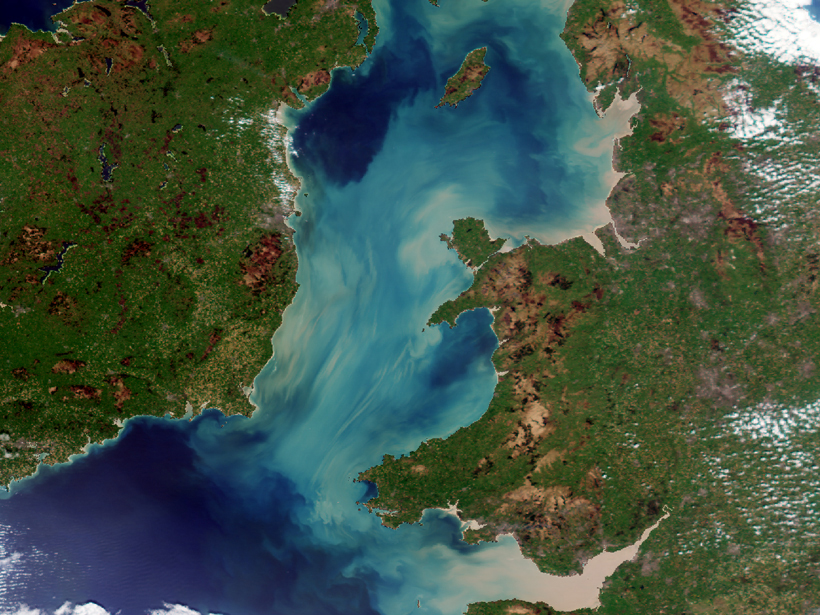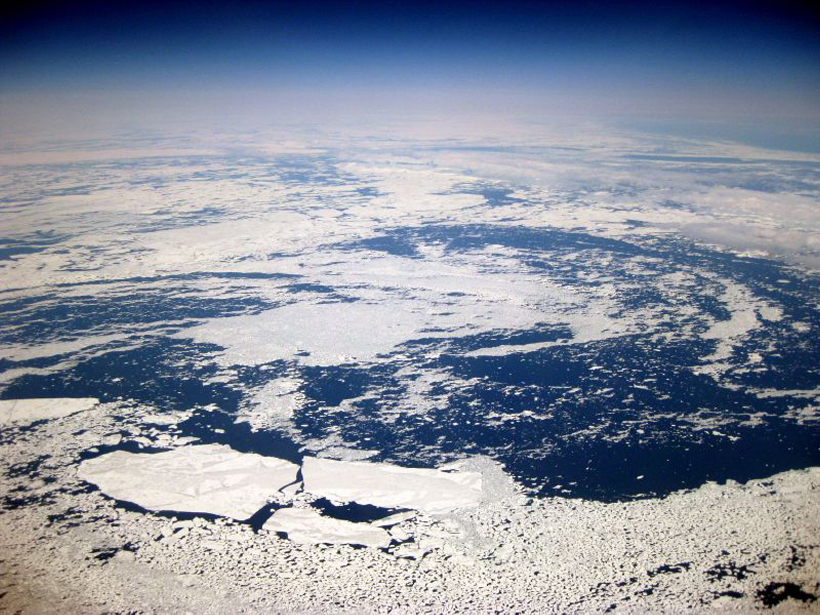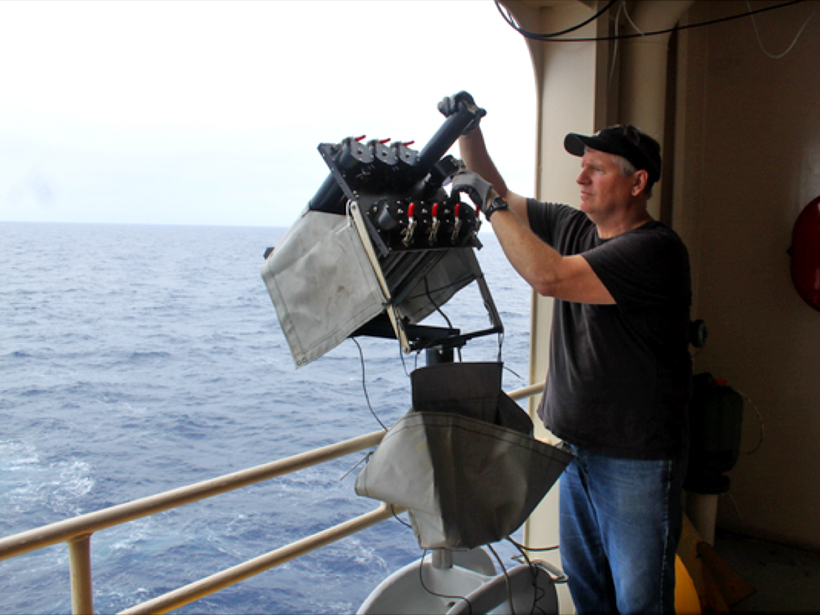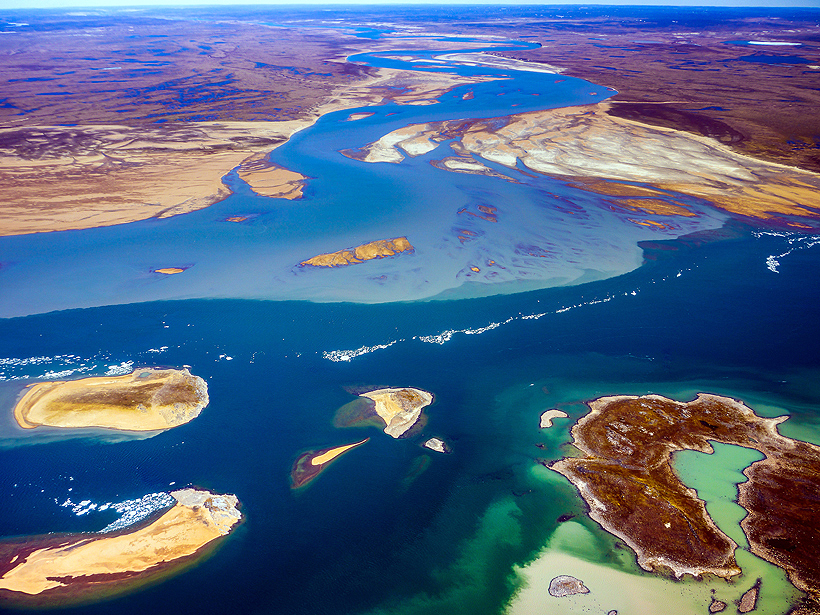In the 2000s, the North Atlantic stopped absorbing as much atmospheric warmth. However, the ocean lost only a little heat—the rest was held deeper below the surface by altered circulation patterns.
Atlantic Ocean
Fewer Tropical Cyclones Form After Volcanic Eruptions
Volcanic eruptions aren't all bad—in some cases, they can lower the frequency of tropical cyclones in the North Atlantic by emitting sulfate aerosols.
Satellites Reveal Dynamics of Suspended Mineral Particles
A case study of the Irish Sea evaluates the use of ocean color data to measure the optical properties of sedimentary particles in offshore waters.
Atlantic Sea Ice Could Grow in the Next Decade
Changing ocean circulation in the North Atlantic could lead to winter sea ice coverage remaining steady and even growing in select regions.
A Big Climate Driver in a Small Ocean Basin
Scientists review Atlantic Ocean circulation variability and its applications for predicting decadal climate variation.
Microbes Make a Quick Meal of Methane in a Submarine Canyon
Scientists track the fate of methane released by hydrates in a major canyon off the U.S. East Coast.
Can the North Brazil Current Help Us Understand Atlantic Water Flow?
Currents off the coast of northern Brazil can be used to study changes in the larger oceanic circulation pattern in the Atlantic, when variable winds in the regions are properly accounted for.
Data Correction Needed for Long-Term Heat Transport Monitoring
Scientists assess how historical temperature biases could impact the detection of ocean heat transport changes in a key area of the South Atlantic Ocean where data are scarce.
Mysterious Boulders Suggest Ancient 800-Foot-Tall Tsunami
The suspected sudden collapse of a nearby volcano's flank may have triggered an enormous wave that carried large boulders high onto Santiago Island in Cape Verde, a new study finds.
Small Rivers Could Have Big Impact on Arctic Ocean
The Mackenzie River carries the bulk of freshwater flow from North America's tundra to the North Atlantic. But what about the effects of smaller rivers from Canada's Arctic islands?


